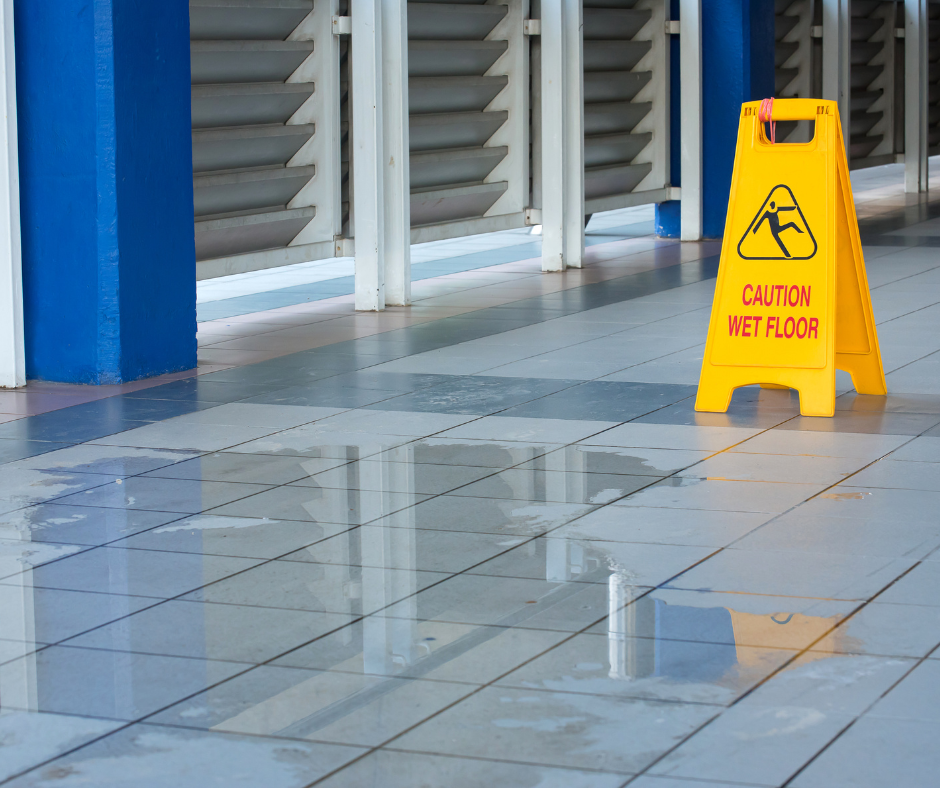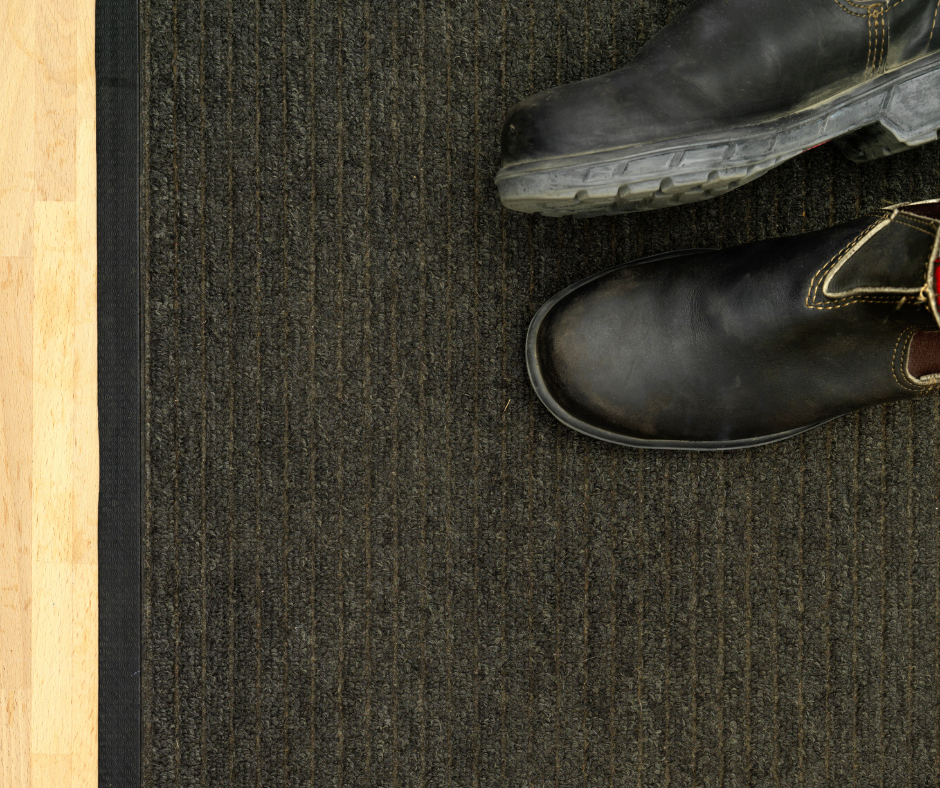
For those in the northern hemisphere, cold weather and cold weather elements are on their way, or they are already here for some. Snow, ice, and freezing temperatures have a large impact on floors, cleaning procedures, and product selection. As we hunker
down inside and protect ourselves from the brutal winter elements, it’s time to think about how our floors are affected this time of year. Continue reading to learn more.
1. Safety
Snow and ice compromise the safety of building occupants. When someone walks across a floor ridden with melted snow and ice, there’s a very good chance that their shoes will lose traction and cause a slip and fall. According to the U.S. Bureau of
Labor Statistics, 20,520 workplace injuries are due to falls from ice, sleet, and snow and result in a day or more away from work. 28% of those resulted in more than a month off from work. All injuries from slips and falls from snow and ice are classified
under traumatic injuries, which range from minor bruises and cuts to serious fractures, spinal cord damage, and concussions.
2. Appearance

Any combination of external soils can potentially ruin a floor’s appearance when tracked inside. During the winter months, mud, snow, slush, and salt are usually the main culprits and are unavoidable. Facilities must take steps to protect people
on their property inside and out. Laying salt is one way to melt the snow and ice, but salt or ice melt can scratch and abrade floor finish, thanks to the rough texture of Calcium Chloride. Calcium Chloride melts up to 8 times as much ice within
the first 30 minutes at 20 degrees Fahrenheit than regular salt. It is not uncommon for it to be used in parking lots and sidewalks, meaning salt or ice melt is more likely to be tracked in.
Salt and ice melt can also leave behind a white residue if not cleaned up right away, which is damaging to the finish and looks hazy on the surface. They will splinter wood floors and cause dry rot in carpets if left too long. The presence of these
winter soils calls for additional cleaning practices and procedures to maintain a clean look.
3. Moisture
If melted snow and ice are not properly cleaned up, the increased moisture on the floor can be damaging. There are several things that can happen and indicate too much moisture has penetrated the floor:
- Adhesive deterioration and failure
- Losing floor tiles
- Peaking and curling where the edges of the floor have raised
- Open seams
- A musty odor that occurs when there is mold growth and when moisture becomes trapped
- Pest infestations, like termites and ants, from the dark and damp environment
Moisture can cause issues on every floor type, but it is the worst offender for carpet. As water from snow and ice seep into the carpet, it can destroy the fibers and padding. Salt attracts moisture and stays wet. The damp residue is alkaline and
potentially harmful to dyes used in acid-dyed nylon and wool. The salt crystals contribute to abrasive damage to carpet fibers. Additionally, carpet can give off foul odors as old moisture becomes trapped if not treated in time.
Solutions
Proper cleaning and maintenance on floors during the winter months is the solution to reduce slip and fall accidents, maintain a high-quality appearance, and eliminate excess moisture. Before winter beings, strip and recoat the floors to increase
protection. If it’s too late to do so, performing a scrub and recoat is the second best line of defense. It will provide a layer of finish on the floor and will help avoid deep stains. Click here to take our Floor Finish Selector Guide quiz to determine which Betco floor finish is best for your floor.

Place weatherproof mats at every entrance and ensure they are regularly cleaned. Mats will serve as a place for building occupants to wipe their shoes, eliminating snow, ice, and salt from being tracked onto the floor and creating a safety hazard.
Scraper mats stop grit and snow, while a cloth mat dries moisture on shoes. Another mat piece may be placed as somewhere to leave weathered shoes or boots. It is recommended to have at least 20 feet of matting at every entrance.
The Workman® 20 Wet Dry Vacuum tackles all types of wet or drying cleaning
on hard floors and carpets. Use it at every entrance multiple times per day as the mats become soiled. Use it to also suck up excess moisture lingering on the floor or soils that have been tracked beyond the carpets and mats. The GeneSys™ Auto Scrubber tackles larger spaces or spaces with excessive soils and water by offering
a complete clean that mopping alone cannot. When auto scrubbing during the winter, it is best to use a double scrub method.
Most floor cleaning chemicals and neutral cleaners are formulated to remove everyday dirt and oily grime, but winter weather elements pose more challenges. Use pHerfect on most hard floor surfaces to remove tough soils and neutralize common ice melt and salt ingredients and byproducts, such as sodium, Calcium Hydroxide, and Hydrochloric Acid, in one step. Salts slowly dissolve in water and need to be kept wet
by rinsing, which is time consuming. Using an acidic solution, like pHerfect, speeds up the dissolving process by neutralizing the salt.
Betco also has products formulated for specific flooring types, including:
Consistently cleaning and vacuuming will also increase safety by reducing slip and fall accidents. In addition, Betco has a Slip and Fall Prevention Program that contains resources about common causes, risk management, and emergency response efforts.
A free Slip and Fall Prevention e-learning course is available, and Betco experts will assist with recommending best practices and products to reduce slip and fall
accidents.
For more information about Betco’s floor care program, click here. To get in touch with a Betco
representative, click here.